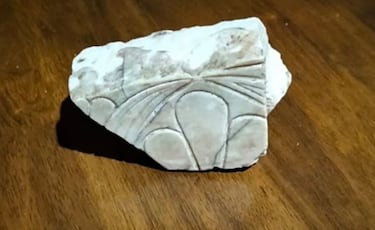Historic find: a man believes he has a fragment of the Parthenon, but authorities discover it was from an older temple
A Chilean engineer inherited a small piece of marble that was once part of the Acropolis in Athens. The fragment has been returned to Greece.

When 77-year-old Chilean engineer Enrico Tosti-Croce heard a radio report about Greece’s renewed call for the return of the Acropolis marble sculptures, he knew exactly what he had to do.
Sitting in his home was a small piece of carved marble—something he believed came from the Parthenon itself. “It was my responsibility to return it,” he told The Art Newspaper.
The story behind the fragment stretches back nearly a century. In 1930, Enrico’s father, Gaetano Tosti-Croce, an Italian naval engineer who would later serve in World War II, visited Athens with the Italian Navy. During a stop at the Acropolis, he picked up a small carved piece of marble near the base of the Parthenon—the iconic 5th-century BC temple dedicated to the goddess Athena. That fragment traveled with him across continents, eventually settling in Viña del Mar, Chile, after the war.

Greece and its struggle to recover its historical heritage
For decades, the marble sat quietly on a shelf in the family’s dining room. “It was just another decoration,” Enrico recalled. After his parents passed away in 1994, he inherited the piece.
But as Greece intensified its decades-long campaign to reclaim its cultural heritage—most notably the Parthenon sculptures housed in the British Museum—Enrico felt compelled to act.
He reached out to the Greek embassy in Santiago, sharing photos and details of the artifact. After months of correspondence, he shipped the marble to the embassy. Later, he received a letter from Olympia Vikatou, director of Greece’s Archaeological Service, thanking him for the gesture and offering a surprising revelation: the fragment likely didn’t come from the Parthenon, but from an even older temple—the Hecatompedon, a monumental structure that predates the Parthenon and once stood on the same sacred hill.
Enrico’s act of restitution may seem small, but it speaks volumes in a global conversation about cultural preservation and historical justice. For Greece, every piece returned is a step closer to restoring the legacy of its ancient past.
Related stories
Get your game on! Whether you’re into NFL touchdowns, NBA buzzer-beaters, world-class soccer goals, or MLB home runs, our app has it all.
Dive into live coverage, expert insights, breaking news, exclusive videos, and more – plus, stay updated on the latest in current affairs and entertainment. Download now for all-access coverage, right at your fingertips – anytime, anywhere.

Complete your personal details to comment